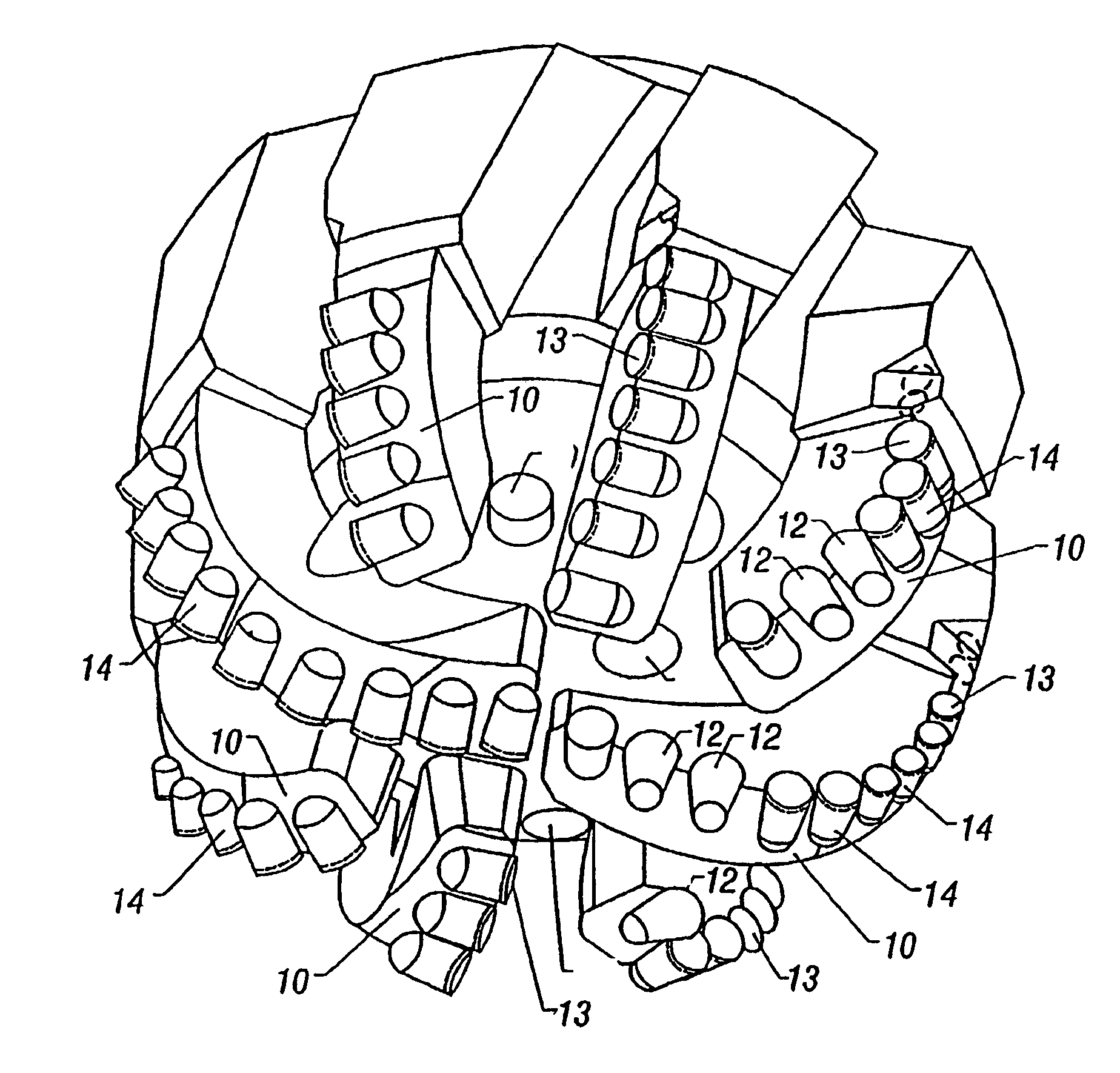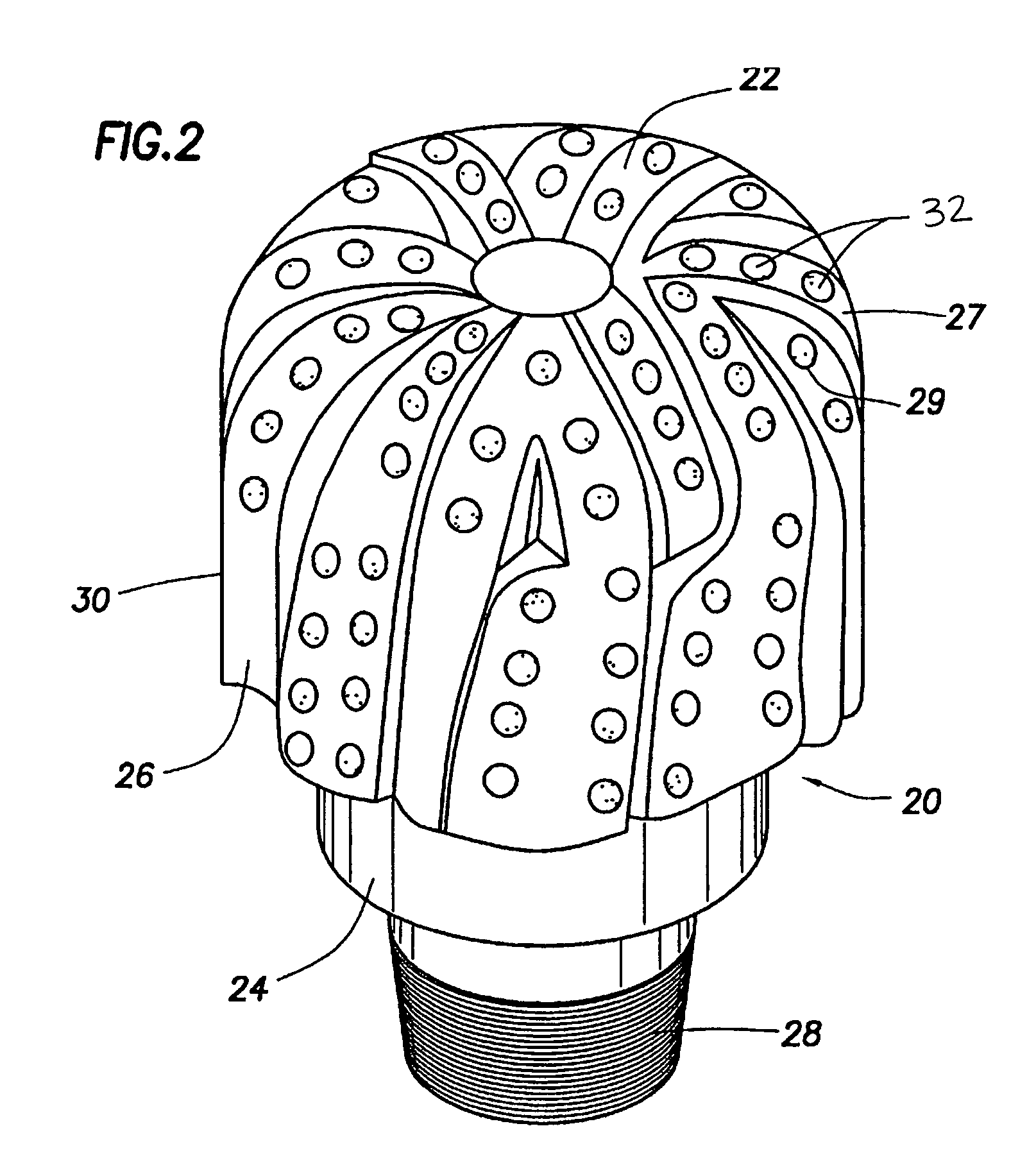High-strength, high-toughness matrix bit bodies
a matrix bit body, high-strength technology, applied in the direction of cutting machines, other manufacturing equipment/tools, manufacturing tools, etc., can solve the problems of drill bit failure, steel is more susceptible to erosive wear, and the bit and the pdc cutter may be subject to substantial abrasion forces
- Summary
- Abstract
- Description
- Claims
- Application Information
AI Technical Summary
Problems solved by technology
Method used
Image
Examples
examples
[0045]Matrix powders having various components were infiltrated to test for various material properties, including transverse rupture strength (TRS), toughness, wear, and erosion resistance. Fracture toughness was measured as Klvb (generally indicated as KIC) in accordance with the ASTM C1421 chevron-notched beam test method. For this test,
[0046]KIc=PmaxBWYC(α0,α1)
wherein Pmax is the maximum load, B is the thickness of the specimen, W is the height, and Yc is a coefficient based on geometric factors, defined as the minimum stress-intensity factor coefficient. When the crack length α increases to a critical value αc, Y(α0, α1, α) reaches a minimum Yc(α0, α1)=Y(α0, α1, αc), and at the same time, the load P reaches a maximum Pmax. FIG. 3 shows the geometry of a standard chevron-notched test specimen and the parameters used to calculate Yc. Table 1 shows the Yc value for geometry parameters S=32, W=8, B=4, and θ=55°, for Poison ratios of 0.25 and 0.3 that may be used to calculate K...
PUM
| Property | Measurement | Unit |
|---|---|---|
| mesh size | aaaaa | aaaaa |
| mesh size | aaaaa | aaaaa |
| mesh size | aaaaa | aaaaa |
Abstract
Description
Claims
Application Information
 Login to View More
Login to View More - R&D
- Intellectual Property
- Life Sciences
- Materials
- Tech Scout
- Unparalleled Data Quality
- Higher Quality Content
- 60% Fewer Hallucinations
Browse by: Latest US Patents, China's latest patents, Technical Efficacy Thesaurus, Application Domain, Technology Topic, Popular Technical Reports.
© 2025 PatSnap. All rights reserved.Legal|Privacy policy|Modern Slavery Act Transparency Statement|Sitemap|About US| Contact US: help@patsnap.com



